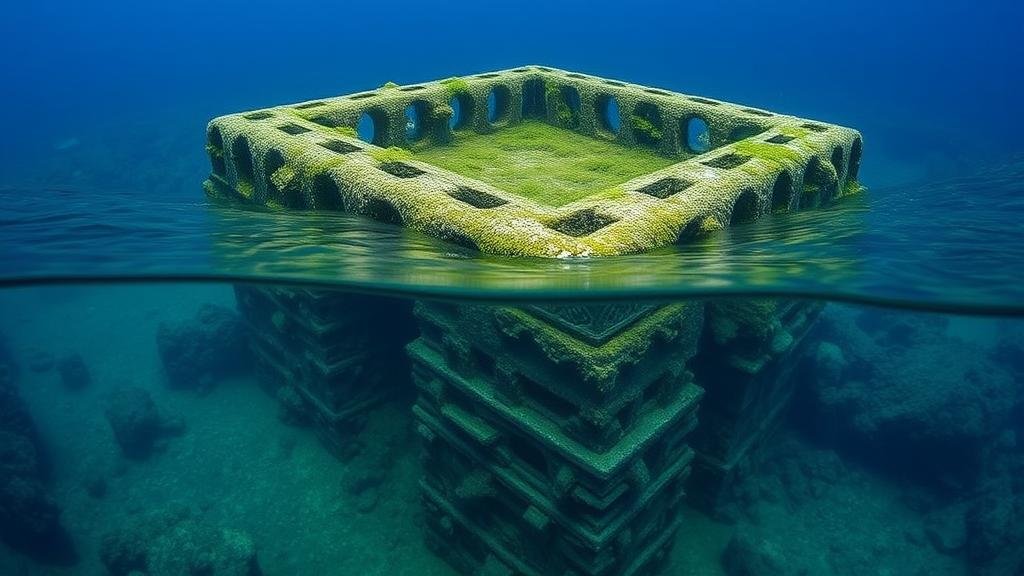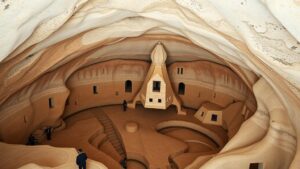Investigating the underwater “Stone Temples of Atlantis” rumored to lie off the Azores archipelago.
Investigating the Underwater Stone Temples of Atlantis
The Azores archipelago, a group of volcanic islands located in the North Atlantic Ocean, has long been the center of speculation regarding the existence of ancient civilizations and artifacts lost to the sea. Among the most intriguing legends is that of the Stone Temples of Atlantis, purportedly submerged along the coast of these islands. This article aims to explore the history, claims, and ongoing investigations surrounding this mythical underwater site.
The Legend of Atlantis
The story of Atlantis, first introduced by the ancient Greek philosopher Plato around 360 B.C., describes a powerful and advanced civilization that ultimately fell out of favor with the gods and sank into the ocean. This tale has fueled centuries of speculation and numerous theories about the real location of Atlantis, with various scholars suggesting places as diverse as the Mediterranean and the Caribbean. In this context, the Azores have gained particular attention, thanks in part to their strategic location and geological features.
Geological Significance of the Azores
The Azores archipelago consists of nine islands, which are situated approximately 1,500 kilometers from mainland Portugal. This unique geographical setting is a result of tectonic activity, as the islands lie atop the Mid-Atlantic Ridge. area is characterized by seismic activity and underwater volcanic formations, which has led to various submerged structures. Some researchers argue that these geological formations, such as seamounts and ancient reef systems, may exhibit similarities to the descriptions of stone structures claimed to have been part of Atlantis.
Claims of Underwater Structures
Reports of underwater structures resembling temples have emerged over the past few decades, largely driven by advancements in underwater exploration technology. Notable claims include:
- In 1997, a submersible vehicle captured images of rock formations off the coast of Terceira Island displaying right angles and linear patterns.
- In 2002, marine geologist Dr. David W. Zambuto posited that these formations might be remnants of an ancient civilization.
- Subsequent dives and sonar imaging have revealed further complex structures, although many remain unexplained.
Scientific Investigations
Despite the compelling nature of these claims, investigations into the underwater structures often yield inconclusive results. The submersible expeditions and sonar mapping carried out by independent researchers and organizations such as the National Geographic Society have struggled to provide definitive evidence for the existence of man-made temples.
- The 2019 underwater exploration project led by Ocean Exploration Trust found geological features consistent with natural formations, rather than human construction.
- Experts point out that the apparent symmetry and straight lines could be attributed to natural erosion processes over millennia.
Historical Context
While modern claims about the underwater structures are alluring, its crucial to sift through the historical context. region has a rich maritime history, with various maritime cultures inhabiting the Azores before Portuguese colonization in the 15th century. Evidence of human activity includes:
- Archaeological sites indicating early settlers were present in the Azores around the 15th century.
- Debate among historians about prehistoric peoples and their potential seafaring capabilities.
Conclusion and Future Directions
The enduring mystery of the Stone Temples of Atlantis near the Azores captivates the imagination, blending mythology with maritime exploration. But, while technological advancements contribute to intriguing findings, concrete evidence of submerged temples remains elusive. Ongoing research coupled with responsible exploration can help deepen our understanding of the Azores underwater landscape.
In summary, the investigation into the underwater structures serves as a reminder of humanitys quest to uncover lost histories. Whether or not Atlantis was ever real, the pursuit reveals the complexity of human civilizations relationship with the sea and the inexorable pull of its legends. As exploration continues, the hope remains that we may one day uncover definitive evidence to clarify these ancient mysteries.



